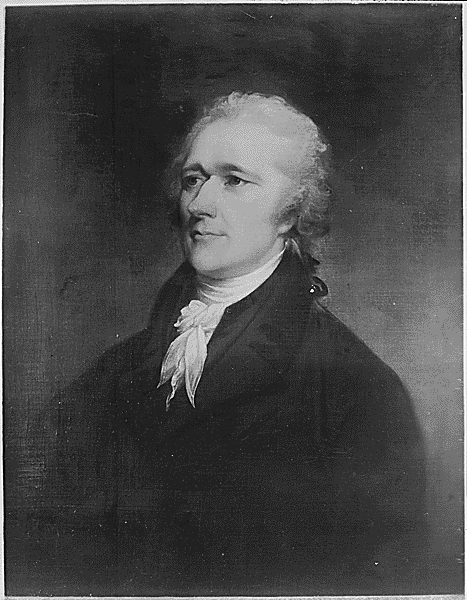
From Alexander Hamilton to ‘Hamilton’—at the National Archives
Press Release · Thursday, May 31, 2018
Washington, DC
 In celebration of Alexander Hamilton and the Broadway musical inspired by his extraordinary story, the National Archives will showcase original records from the Founder’s life and legacy, paired with related Hamilton lyrics. The Featured Document exhibit, “Alexander Hamilton: An Inspiring Founder,” will open on June 7 and run through September 18, 2018.
In celebration of Alexander Hamilton and the Broadway musical inspired by his extraordinary story, the National Archives will showcase original records from the Founder’s life and legacy, paired with related Hamilton lyrics. The Featured Document exhibit, “Alexander Hamilton: An Inspiring Founder,” will open on June 7 and run through September 18, 2018.
Preview on Facebook Live (www.facebook.com/usnationalarchives)
Tuesday, June 5, 10 a.m. EDT
See our Alexander Hamilton documents before they go on display! Join us for a special behind-the-scenes preview of the documents, and ask questions about Alexander Hamilton and the National Archives.
The display will be in the East Rotunda Gallery of the National Archives Museum in Washington, DC. Museum hours are 10 a.m. until 5:30 p.m. Free admission. Enter on Constitution Avenue at 9th Street, NW. Metro accessible on the Yellow and Green lines, Archives/Navy Memorial/Penn Quarter station.
Featured Document Exhibit : “Alexander Hamilton: An Inspiring Founder”
Alexander Hamilton rose from humble beginnings to become one of the most important men in our nation’s history. A soldier and a statesman, he dedicated his life to the country he helped to create.
Hamilton served in the Continental Army, Continental Congress, and Constitutional Convention. He was the first Secretary of the Treasury and established the first National Bank, the U.S. Mint, and the Coast Guard. Many of Hamilton’s economic, political, and military ideas for the new United States of America became vital to its future success, yet his story has been retold less often than those of other Founders.
Revolutionary War report
Original copy of Alexander Hamilton’s letter to the Marquis de Lafayette describing his actions at the Battle of Yorktown, October 15, 1781. National Archives, Records of the Continental and Confederation Congresses and the Constitutional Convention
Alexander Hamilton served as Gen. George Washington’s aide-de-camp for much of the American Revolution. After pressuring Washington, he finally gained a field command in July 1781. This copy of Hamilton’s report to the Marquis de Lafayette from October 15, 1781, details his unit’s successful assault and capture of Redoubt 10 during the Siege of Yorktown. The British Army’s loss of this defensive stronghold contributed to General Cornwallis's surrender, which brought an end of the Revolutionary War.
An unpopular plan
Alexander Hamilton’s Plan of Government, 1787. National Archives, Records of the Continental and Confederation Congresses and the Constitutional Convention
Alexander Hamilton served as a New York delegate at the Constitutional Convention that ultimately framed a new national system of government embodied in the United States Constitution. On June 18, 1787, Hamilton famously spoke for six hours straight while he proposed his own “Plan of Government” to the Convention. His 11-point plan called for a strong centralized government that concentrated power with the “Supreme Executive” (President) and lifetime terms for the Executive and Senators after their election. Although Hamilton’s plan was never seriously considered, he campaigned passionately for the new Constitution’s ratification.
A historic appointment
George Washington’s Nomination of Alexander Hamilton to be the First Secretary of the Treasury, September 11, 1789. National Archives, Records of the U.S. Senate
After taking office as the nation’s first President, George Washington appointed his cabinet. On September 11, 1789, he nominated Alexander Hamilton as Secretary for the Department of the Treasury. As the first Secretary of the Treasury, Hamilton implemented an ambitious plan to strengthen the new nation’s economy. He consolidated individual states’ Revolutionary War debts into a single national debt, instituted a Federal excise tax to raise revenues, and created a national bank to improve the nation’s credit and more easily transact Federal financial business.
One of Hamilton’s last statements
Alexander Hamilton’s “Statement of My Property and Debts, with Remarks,” July 1804. National Archives, Records of the U.S. House of Representatives
The long and bitter rivalry between Alexander Hamilton and Aaron Burr came to an end on July 11, 1804, when Burr mortally wounded Hamilton in a duel. Hamilton died the following day. Just days before his death, Hamilton penned this handwritten statement explaining his financial circumstances “if an accident should happen to me,” because he correctly feared that his debts would be burdensome to his family.
Preserving Hamilton’s legacy
Petition of Elizabeth Hamilton Asking Congress to Publish Alexander Hamilton’s Writings, 1846. National Archives, Records of Joint Committees of Congress
Alexander Hamilton’s widow, Elizabeth “Eliza” Hamilton, outlived her husband by 50 years. She remained devoted to Hamilton and preserving his legacy until her death in 1854. In 1846, Eliza sent this petition to Congress requesting assistance in funding the publication of Hamilton’s papers. She argued that publishing and preserving his papers would demonstrate to the American people how necessary Alexander Hamilton was to the nation. Congress subsequently passed legislation to publish, distribute, and preserve Alexander Hamilton’s papers.
High resolution images of the documents that will be displayed are available on request, email public.affairs@nara.gov.
This page was last reviewed on May 31, 2018.
Contact us with questions or comments.
 X:
X: